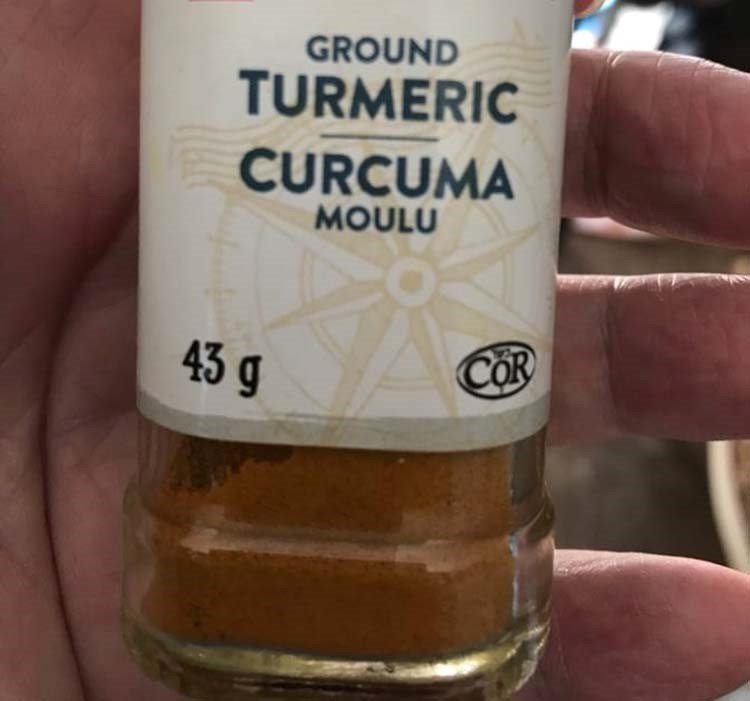Turmeric, curcuma longa, comes to us from India and Asia, and is a cousin of the ginger plant. The rhizomes, which look like ginger, are a warm golden color inside, and from these rhizomes comes the powder that we know and love as a wonderful spice in this part of the world.
Mom always used turmeric when she made her delicious bread and butter pickles. It was always amazing to me how such a small amount of the spice could add that amazing color to the pickle brine. Used in a very different way, the spice is another staple in delicious curries that we shared with friends (good luck, Lesline and Janeesh!), because, guess what, turmeric is part of curry spice. Turmeric will also give rice a sunny color and interesting flavor.
There are dozens of species of turmeric, mostly grown in India and Asia, because they need consistently warm temperatures and generous amounts of rain.
While doing my homework, I found some interesting turmeric tidbits. It is interesting that the yellow robes worn by Buddhist monks are dyed with turmeric. There is also a fascinating ceremony in Indian wedding ceremonies in which the bridal couple are covered with a paste of turmeric (haldi) that blesses the couple, brings prosperity, and purifies the body.
Turmeric is not only used as a spice or for its amazing color properties, but also as a medicinal ingredient. If you look up articles about turmeric, you will see that it has many claims to fame when it comes to health; the most common that I have seen are that it helps upset stomachs, respiratory ailments, or arthritic issues. It was used in Ayurveda and classic Indian medicine
Curcumin, the active component of turmeric, is a natural antioxidant. Now this is interesting: it is difficult for our bodies to absorb curcumin, but if a supplement has black pepper in it, it seems to make absorption easier. Turmeric comes in teas, powders and capsules. Please do you own homework about the medicinal properties of turmeric and always check with a family doctor before taking any kind of supplement.
Let’s talk about curry powder for a moment. Did you know that curry powder is actually a combination of several spices: chili powder, ginger, pepper, cumin, and turmeric? The varying proportions of these spices take the curry mixture from mild heat to very spicy!
Now, back to gardening! If we wanted to try an interesting experiment, we could try growing our own turmeric, not so much for the rhizomes, but for a conversation plant! To start, we would need the rhizome. We once planted ginger, starting it from a rhizome we got in the produce aisle. Though I have not seen turmeric rhizomes, I read that they are available online. We would cut the rhizomes so that we have two or three eyes on each section, just as we do with potatoes. Lay the rhizomes flat on the soil, then cover and water gently. Cover them with a plastic bag and then out them somewhere nice and warm to get them started. Once they are up, they like a sunny location and consistent moisture. It would be interesting and exciting to have such a novelty plant! See what’s new with the Yorkton Hort society by visiting our website at www.yorktonhort.ca
Thank you, always, to our friends at YTW for their fine work on local news. Have a great week!






